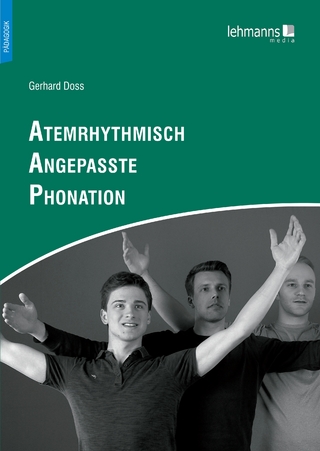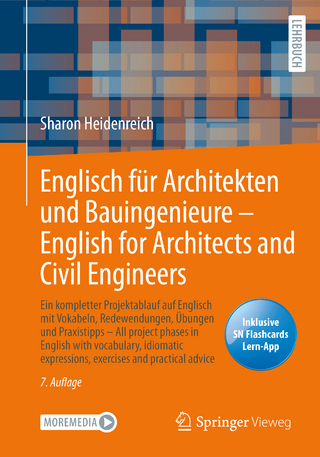
The Old English Case System
Brill (Verlag)
978-90-04-43526-1 (ISBN)
The Old English Case System. Case and Argument Structure Constructions by Kirsten Middeke is a Construction Grammar account of Old English argument structure that integrates modern cognitive corpus linguistics and traditional philological work. This is the first major study on Old English morphosyntax from a constructional perspective, based on findings from various strands of theoretical linguistics, including generative approaches, constructionist accounts, quantitative linguistics, and many more. It argues for a new take on historical comparative syntax, a field which has been dormant for quite a while but might see a new boost through the ideas presented here.
Kirsten Middeke, Ph.D. (2018), Freie Universität Berlin, is a postdoc at that university. She researches and teaches both synchronic and diachronic linguistics and is particularly interested in empirical methods for studying the semantics and evolution of grammatical constructions.
List of Figures and Tables
Abbreviations
Acknowledgements
1 Introduction: And gefnǣs þone tōþ …
1.1 Studying Old English Argument Structure from a Construction-Grammar Perspective
1.2 The Lexicon Is Not Boring! Cognitive Historical Linguistics
1.3 Objectives
1.4 Organization
1.5 Notes on the Text
2 Not Balanced: The Database
2.1 Corpora and Methods of Data Collection and Analysis
2.2 The Verb as a Diagnostic for Constructional Meaning
2.3 Doing Cognitive Linguistics with Historical Corpora
3 Theoretical Preliminaries
3.1 Constructions
3.2 Valency
3.3 Construal
3.4 Semantic Roles
3.5 Formalism
4 Origins, Wholes, Stimuli—and Aspect? The Genitive
4.1 Introduction: Genitivus is gestrȳnendlīc
4.2 The Old English Genitive as a Family-Resemblance Category
4.3 Functions of Arguments and Adjuncts in the Genitive
4.4 Synthesis: The Functions of the Old English Genitive
5 Place, Time and Manner: The Instrumental
5.1 Introduction: A Case or Not a Case Any More?
5.2 The Old English Instrumental: Forms and History
5.3 Distributional Analysis: Frequencies and Collexemes
5.4 Fixed Formulae or Productive Pattern?
5.5 Factors Influencing the Frequency of the Instrumental
5.6 The Semantic Networks of the Instrumental
5.7 Synthesis: The Functions of the Old English Instrumental
6 Recipients and Addressees, Beneficiaries and Experiencers: The Dative
6.1 Introduction: Dativus is forgyfendlīc
6.2 Functions of Arguments and Adjuncts in the Dative
6.3 Functions of Datives with Nouns and Adjectives
6.4 Formally Assigned Datives
6.5 Synthesis: The Functions of the Old English Dative
7 Patients, Targets, Direct Objects? The Accusative
7.1 Introduction
7.2 Functions of Arguments and Adjuncts in the Accusative
7.3 Discussion: The Accusative in Semantic Space
7.4 Evaluation: Semantic and Syntactic Case?
7.5 Synthesis: The Functions of the Old English Accusative
8 Affectees: Oblique Case and Impersonal Constructions
8.1 Introduction: Impersonal Constructions Are Not Quirky!
8.2 Old English Impersonal Clause Patterns and their Associated Event Types
8.3 Discussion: How many Impersonal Constructions are there, and where do they Come from?
8.4 Synthesis: The Functions of the Old English Oblique Affectee Constructions
9 Agent, Topic, Subject? The Nominative
9.1 Introduction: The Case of the Subject?
9.2 Functions of Arguments in the Nominative
9.3 Functions of hit and þæt
9.4 Synthesis: The Functions of the Old English Nominative
10 Synthesis and Theoretical Implications
10.1 Introduction
10.2 Construction Grammar: Case Constructions and Argument Structure Constructions
10.3 Valency: Verbs and Argument Structures, Integration and Coercion
10.4 The Construct-i-con: Contextual Neutralization, Constructional Synonymy and Co-extensive Categories
10.5 Conclusion: A Construction Grammar Approach to Old English Argument Structure
Appendix to Chapter 4
Appendix to Chapter 5
Appendix to Chapter 6
Appendix to Chapter 8
References
Index
| Erscheinungsdatum | 05.11.2021 |
|---|---|
| Reihe/Serie | Brill's Studies in Historical Linguistics ; 12 |
| Verlagsort | Leiden |
| Sprache | englisch |
| Maße | 155 x 235 mm |
| Gewicht | 854 g |
| Themenwelt | Geisteswissenschaften ► Sprach- / Literaturwissenschaft ► Sprachwissenschaft |
| ISBN-10 | 90-04-43526-3 / 9004435263 |
| ISBN-13 | 978-90-04-43526-1 / 9789004435261 |
| Zustand | Neuware |
| Haben Sie eine Frage zum Produkt? |
aus dem Bereich


